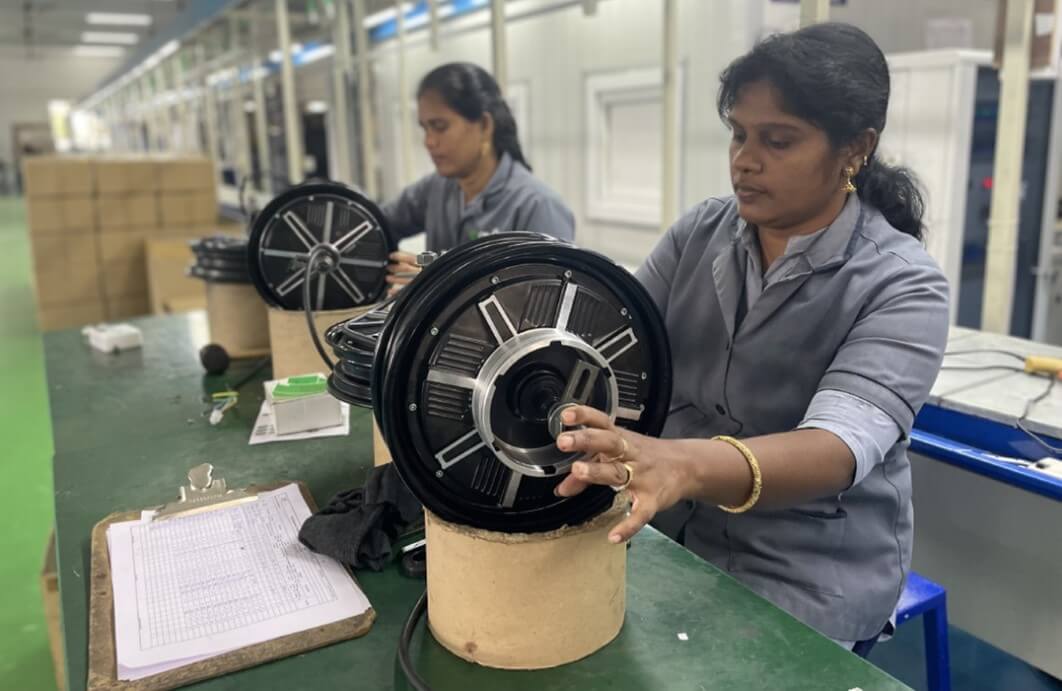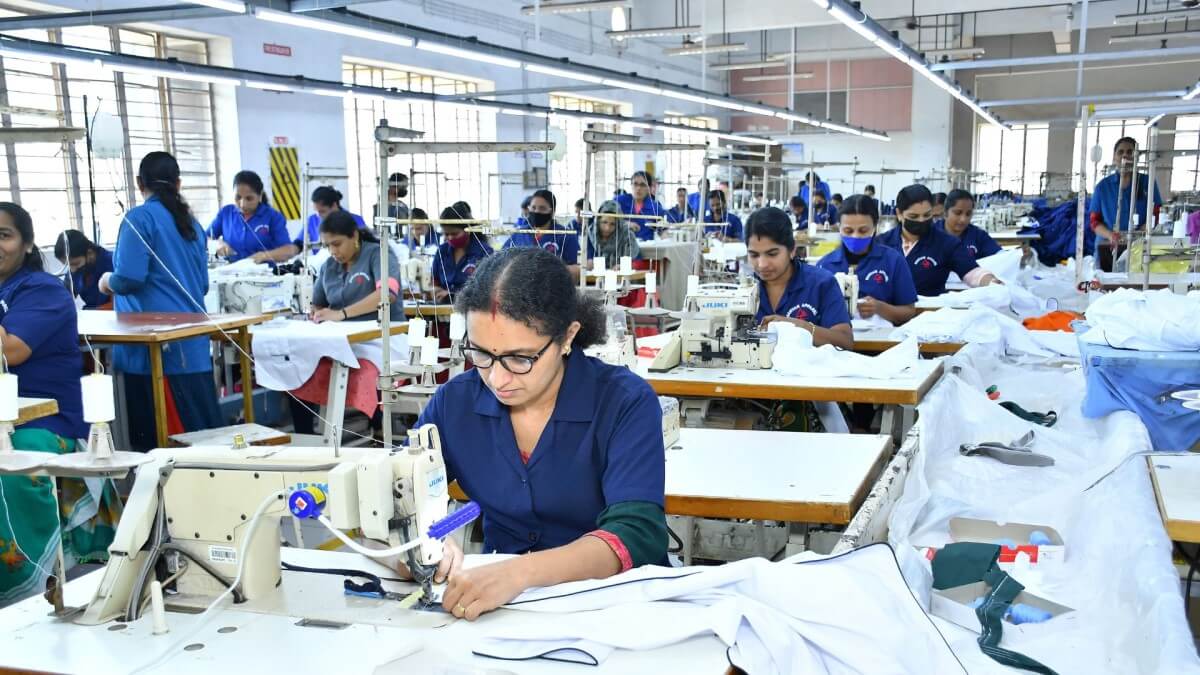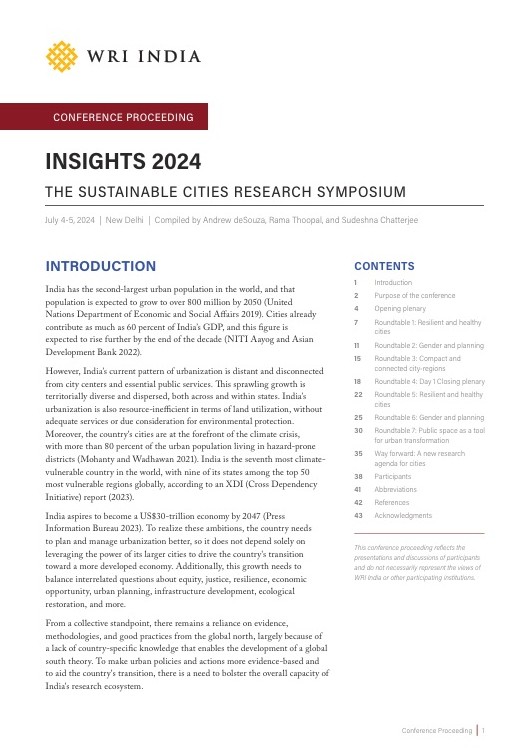Early, Concerted Efforts Key to a Just Transition for Indian MSMEs: Insights From Auto and Textile Sectors
by , e -
This article was originally published in the April-June 2022 issue of the Energy Manager Magazine.
Early action on the green transition offers immense opportunity to boost business, innovate, attract new investments, create new jobs and develop a competitive advantage in new, emerging sectors like green energy (solar, wind, green hydrogen, etc.) and green technologies (electric vehicles, etc.). Early action is also needed to ensure that conventional players in these sectors remain competitive as the green transition changes everything from materials and machines to products, jobs and business models. This needs concerted efforts by policymakers, financing organizations, training institutions, technology providers, civil society and the businesses themselves. This is especially true for Micro, Small & Medium Enterprises (MSMEs).
Challenges for MSMEs in the Low Carbon Transition
Even though MSMEs contribute 29% to the national GDP, almost 99.5% of registered MSMEs in India fall under the micro or small enterprise category. They also employ more than 110 million people and are largely informal which limits their access to the formal banking system and thus, access to reliable sources of credit. This, in turn, exacerbates their financial vulnerability to external impacts. Running bootstrapped operations with limited capacity, MSMEs may not have the wherewithal to undertake the necessary technological shifts and upgrade to the necessary skill set needed in the low-carbon industry.
To ensure that MSMEs are equipped to avail the opportunities of the low-carbon transition and aren’t left behind because of existing challenges, it is crucial to understand what the transition will mean for them and work across the ecosystem to ensure access to requisite technology, finance, skilling and policy support. Such a green transition can then ensure that the profitability of small businesses is safeguarded, and people don’t lose jobs in the transition, making it not only a low-carbon but also a just and equitable low-carbon transition.
In this blog, we take a closer look at the automotive and textile sectors — both leading employers in the country with many MSMEs in their value chains and as part of their domestic and international supply chains —, how the low carbon transition will impact them and what measures will be needed to prepare them.
EV Transition in the Automotive Sector

The automotive sector in India contributes 49% of the country’s manufacturing GDP or 7.1% of the national GDP. Of the 35 million people employed across its value chain, 15 million people are employed in 35,000 to 45,000 MSME units that manufacture the 2000+ parts needed to build an internal combustion engine vehicle (ICEV). Electric vehicles (EVs) on the other hand comprise only about 20 parts of which the battery alone contributes to 50% to 55% of the car’s value. This transition could affect ICEV MSMEs’ future business outlook.
To begin with, EVs require more advanced skills in handling electrical, electronics and IT parts compared to the conventional mechanical engineering skills used in ICEVs. This implies a shift from high-labor, lower-skill operations in the ICEV industry to low-labor, high-skill operations in the EV industry. Next, the impact on different segments of the value chain will be different. Original equipment manufacturers (OEMs) and tier one companies have the financial and technological bandwidth to make their product mix future-proof by developing EV production and assembly lines, introducing digital solutions, accumulating necessary skills, introducing R&D on EV battery technologies, etc. To prevent layoffs, they may also integrate end-to-end production into their in-house operations which would reallocate but not reduce their workforce, but this would impact the business of tier two and tier three MSMEs that they would have otherwise procured parts from. These tier two and tier three MSMEs will be the segment most vulnerable to the transition as they have limited autonomy in planning for their future in the absence of access to the long-term transition plans of their OEM and tier one customers on whom their businesses depend. MSMEs manufacturing engine and transmission parts will face the highest risk, as these parts will become obsolete in EVs, and will have to diversify their businesses to other products like motors, or other industrial sectors like defense, which will require integrated policy planning and technological, financial and skilling support. MSMEs manufacturing Heating, Ventilation and Air-Conditioning Systems (HVAC), braking and suspension, and electrical and electronic parts will face medium risk as these parts will exist in EVs. But the technology may be different or more advanced, so they will need to upskill their workers and invest in new machinery. Tier two MSMEs such as in ferrous casting will also face considerable risk and will have to shift to aluminum casting for EVs.
While initial studies on the EV transition in Europe’s automotive markets suggest that the transition will lead to a restructuring rather than shrinkage of the labor force in the long term, the parallel existence of ICEVs, hybrids and EVs in the medium term (next ten years) is critical to allow businesses the time to adapt to the complete transition profitably.
Moving Towards Sustainable Textiles and Apparels:

Textile and apparel sector manufacturing operations in India are highly resource intensive – they rely on fossil fuels for polyester manufacturing and dyeing, use pesticides and excessive amounts of water to grow cotton and emit large amounts of greenhouse gases, waste and wastewater. At the same time, with 45 million direct and 100 million indirect workers creating 12% to 14% of the country’s manufacturing GDP and 12% of its export revenue, the textiles and apparel sector is of social and economic importance in India. Moreover, 36 million of the 45 million workers are employed across 8.4 lakh MSMEs across the country, and already work and live in precarious and vulnerable conditions. As this sector shifts towards renewable energy and less resource-intensive materials, products, operations and business models, it will be necessary to understand the impact on these MSMEs and their workers, to ensure that their conditions improve rather than worsen because of the low-carbon transition.
The nature of the shift to a sustainable textile and apparel sector is different and more complex from the shift to EVs, as it will take multiple forms, driven by different causal forces. While some shifts like low-carbon energy consumption and material efficiency are more obvious, the causal forces driving them are disaggregated, as government regulations and OEM compliance mandates vary across clusters and geographies. Moreover, given the vast interconnectedness of allied sectors like chemicals, agriculture, coal, logistics, etc., with the textile sector, low carbon transitions in the latter would impact businesses in the former. For example, a shift to material efficiency/circular economy would entail a shift from virgin to recycled yarn, which would reduce the demand for cotton and thus reduce the business of cotton farmers and tier two virgin yarn manufacturing MSMEs. At the same time, jobs would be created in the recycling industry, but these would be in different geographies, requiring completely different skills and machinery.
Similarly, a shift from coal to renewable energy would impact stakeholders engaged in logistics businesses that transport coal to industrial units. A major example of such shifts is in the supply chain of large multinational fashion brands that have taken up sustainability targets to shift to clean energy and sustainable materials in the next 10-15 years. Achieving these targets will require process, material and energy shifts in their tier one and tier two suppliers and will lead to the creation of new recycling facilities, but tier two and tier three suppliers from other sectors like cotton, chemicals, etc., will also be indirectly impacted and since they may fall outside the purview of the OEM’s immediate support, larger umbrella just transition policies will be required to support them.
What is Needed
Given that the nature and scale of the transition will vary depending on the sector and region, planning for a just transition will require an integrated, multi-stakeholder, timely and bottom-up approach. At the outset, there is a need to comprehensively map the landscape of MSMEs in the affected sectors, their products, skills, the different transitions that will impact them (automation, clean energy, technological, etc.), how it will impact them (type of energy used, materials and processes used, product mix, etc.), the level to which it will impact them (high/ medium/ low risk), and thus the impact on the people they employ. Based on this mapping, deep and continuous discussions with the government, MSME associations, OEMs, academic and research institutes, worker unions, women’s groups and other experts together can help develop a vision and roadmap for the region based on their skills, strengths, resources and opportunities. Thereafter, concerted policy direction and support will be needed to give the industry a robust signal and mobilize the finance and industry enthusiasm necessary for the R&D, technology transfer, infrastructure set up and skilling for those plans to materialize.
The technological revolution in the automotive sector may mean diversifying to different industries and products for high-risk businesses and advancement and upgradation for medium-risk businesses, but reskilling/upskilling for all. In the textile sector, the mapping exercise itself will be crucial to understand and provide the requisite support for the important transitions in a region and those impacted by it across the value chain.
WRI India is embarking upon one such initiative in Coimbatore which has a well-established ICE MSME cluster and has recently announced its intention to become an EV hub. Bringing together important stakeholders and decision-makers from the government of Tamil Nadu, MSME associations in Coimbatore, OEMs and academic institutions, the initiative will undertake transition and risk mapping, skill gap assessment, identification of alternative industries and development of skilling modules for at-risk MSMEs on entrepreneurship, access to finance, technology and facility visits, to pioneer a just transition for the cluster.
All views expressed by the authors are personal.


